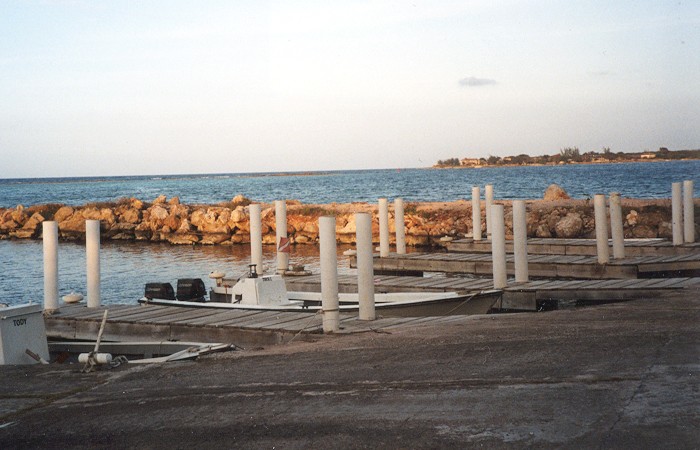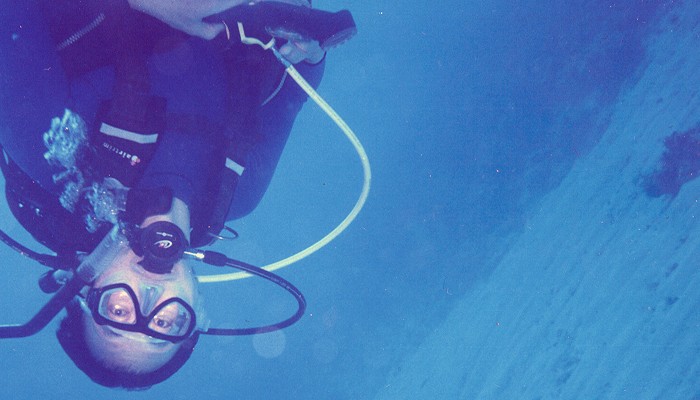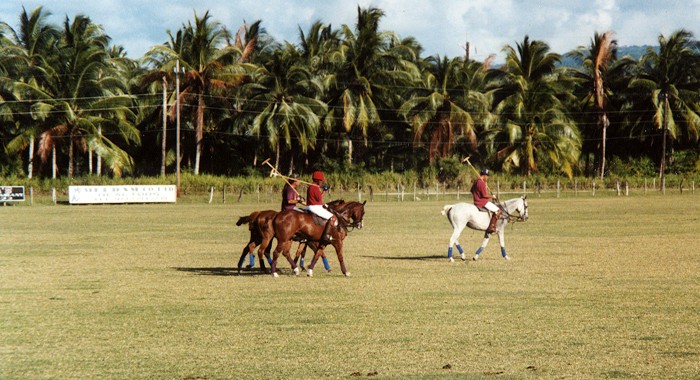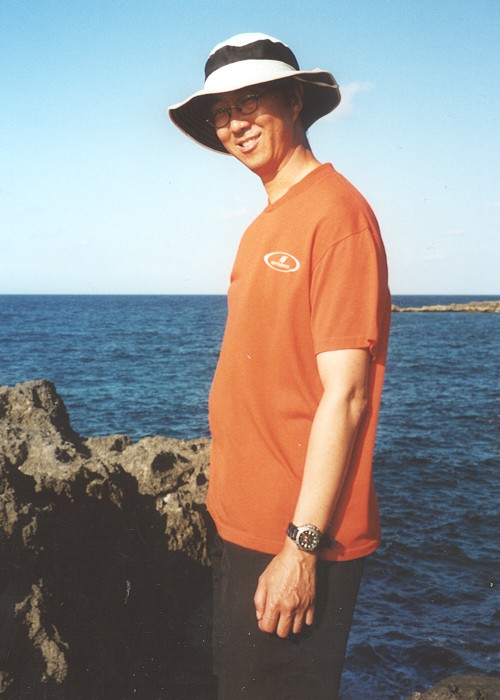
In July/Aug 2001, I participated in an Earthwatch project. Earthwatch sponsors various scientific research projects by way of the monies provided by people who pay to participate. The one I chose, called "Damselfish of Barbados", examined the reproduction of damselfish, in answer the question of how viable ramdomly (i.e. politically) placed marine reserves are. The project had a snorkeling and diving component to examine damselfish nests -- they spawn year round, with peaks around the full moon. The dives were between 10 ft (to survey for fireworms -- one of the project's assistants was doing a project of her own) to 70 ft for the deep damselfish nests. I also did a couple of fun dives with Hightide Scuba, associated with the hotel next door to the Bellairs Research Institute, the homebase of the project. The deep reefs are pretty full of life and quite scenic.
In April 2002, I went on another Earthwatch project, this one to Jamaica to examine coral reef recruitment. This project was an all-scuba project. We volunteers worked on corroborating previous data indicating reduced coral recruitement (i.e. when a coral "baby" establishes itself on the sea bottom somewhere) after intense storm activity. We did this by measuring various species of hard corals, which were used in a polynomial equation developed by Dr. James Crabbe, the PI, to determine the age of the coral.
Our time was spent at Discovery Bay Marine Research Institute, on the north coast of Jamaica. Benthic reef life was pretty reasonable, but fish life was pretty poor, due to severe overfishing by the local population. We stayed in dormitory accomodations at the Institute, which were quite comfortable, though with only cold showers (i.e. room temp). The diving was from small boats, roughly 10-15 minutes away (though some sites were further). This is a view over the dock (showing a boat we used), with the opening to Discovery Bay in the distance.

Mostly, we did two dives in the early morning, before the wind whipped up the waves. Most days were choppy, even in the early morning, with swell of 2-4 ft. The day consisted of waking up, eating a bit of breakfast, assembling the gear, loading the boat, motoring out, back-rolling off, measuring, clambering back on, motoring back, rinsing off, having lunch, reporting data, and then, for me, a nice long nap. Here I am underwater.

We got a day off in the middle of the 10 days, where we saw some sights around Ocho Rios. The last day also proved to be free, after the morning dive, and we rented a car and drove around. One stop we made was to Chukka Cove, where there was a practice polo match going on.

Chukka Cove itself is a nice little bay. This is me overlooking the bay, where we also found fossilized versions of the labyrinthyformis coral.

Thanks to Kathy McGowan for these picture. I took some myself, but accidently opened the camera back and exposed the roll...